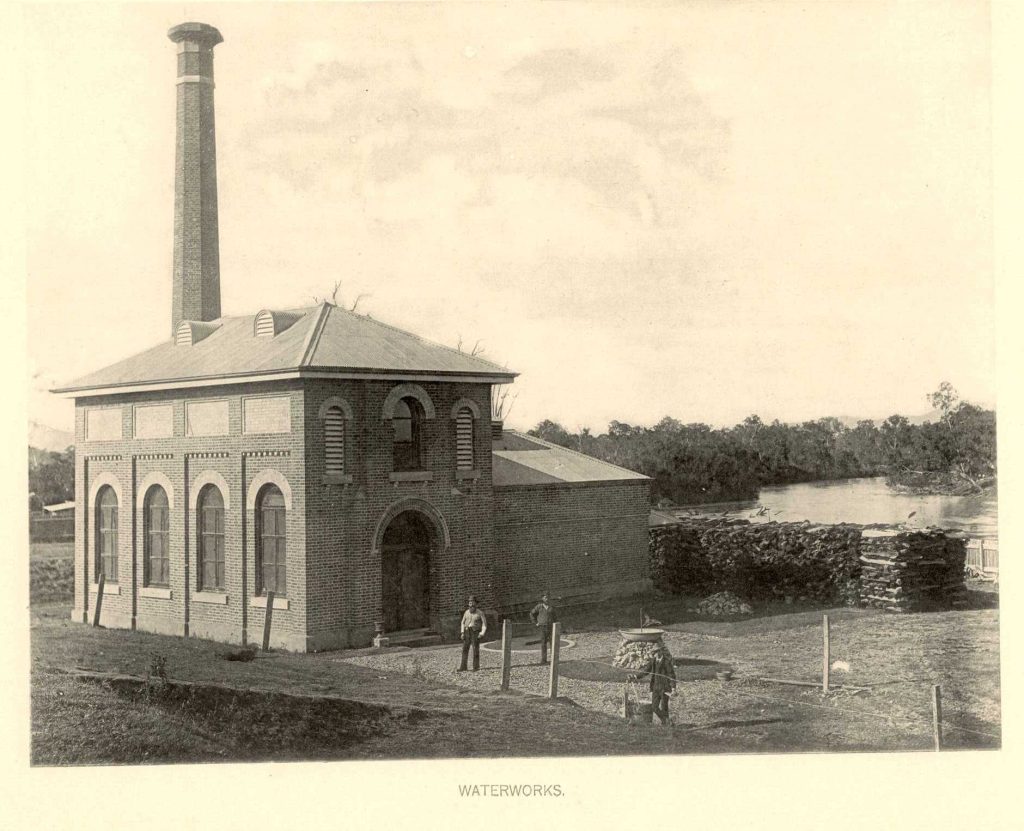Connection to Place
Albury and its region’s Traditional Custodians are the Wiradjuri people. They are the largest Aboriginal Traditional Owner group in NSW and their nation covers the ‘land of the three rivers’, with plains running north and south to the west of the Blue Mountains. The Albury area is known as Bungambrawatha, or ‘Homeland’, by the Wiradjuri people.
The Murray River provided food resources to First Nations Australians, mainly mussels and fish, but also waterfowl and turtles. The Mungabareena Ford was only 60-70m downstream from the Pumphouse. There is a correlation between the occurrence of shallow, fordable sections of the Murray and stone weirs and fish traps, with the traps enabling the capture of larger quantities of food for ceremonial use. The site of the Mungabareena Camp and the associated ceremonial ground is documented as being where the Pumphouse is located.
The Mungabareena Camp is noted as the meeting place of various tribes when on annual visits to the mountains in search of Bogong Moths.
The Bogong Moth ceremony was a time for trading resources and an opportunity for men and women’s business to be conducted.
* Information from Charles, Sturt University, Nineteenth Century Indigenous Land Use of Albury (NSW), 2015, Dirk HR Spennemann
Settlement
The first European visitors to this site were the members of the Hume & Hovell expedition. The party camped at or very close by the Pumphouse site on November 18, 1824.
In 1835, William Wyse, working for Charles Ebden and with a party of drovers, set out from Sydney to find suitable pasturage for Ebden’s stock. He followed the track of the settlers to the Murrumbidgee then Tarcutta Creek, before turning south-west, and, following almost the actual track of Hume and Hovell eleven years before, pressed on, reaching the Hume (Murray) River. Here he formed the Mungabareena Run. The position of his camp is not accurately recorded, though it is probable that it was on a small plain where the Pumphouse is now situated. This was almost the only clear space above flood level on the banks of the river for some distance.
The Pumphouse site was chosen by Thomas Mitchell (aged 19) for the first homestead when Mungabareena Run was transferred to his mother, Elizabeth Mitchell, in the following year (1836).
Excised from the Mungabareena Run, Albury was gazetted as a township in 1839.
* Information from Albury Historical Society publication, Early Settlement in Albury District, From The First Settlement in North-East Victoria, an article by Dr Arthur Andrews published in The Victorian Historical Magazine, Vol 5, March 1916,; and JFH Mitchell papers, State Library, Melbourne.
Pumping Station
The Pump Station was originally built in 1884 to make reticulated water available in central Albury. After further extensions were completed in 1915, it supplied electricity to Albury until bulk supply from the State Electricity Commission of Victoria was established in 1926.
It is a classic example of late 19th century industrial architecture and remnants of its history as a functioning Pumphouse are still present to this day. Above ground, the main building boasts two open two-storey high spaces with an adjacent annex. There is also a sub-terranean level, that was not included in this development – it houses de-commissioned equipment and pipes.

A photo of Albury Pumphouse in 1890, formerly known as the Waterworks.